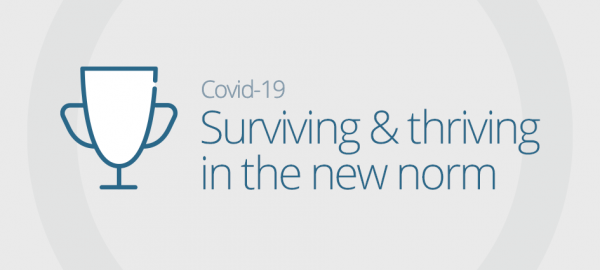The COVID-19 pandemic has changed our world on a micro and macro level. For individuals, there has been profound grief and loss. There have been extraordinary acts of selflessness and bravery and the best and worst of human nature have been laid bare for all to see. On a macro level, the world has changed and the world of work has, perhaps, been affected more than any other aspect of our lives.
So, as hope appears on the horizon in the form of effective vaccines, how do workers feel about returning to ‘normal’? Obviously, there will be relief that the tragic loss of life and staggering daily infection statistics will, hopefully, become a thing of the past within the next twelve months.
However, what about the positive aspects of the pandemic? What about the hopes that we could reset our broken world and emerge from this tragedy a kinder, more enlightened and wiser community? There appears to be little evidence that this has taken place. As the first lockdown ended, the traffic came back, and bird song was drowned out by the din of modern life once more.
Working from home
One aspect of the lockdown that has not been so swift to fall away is the practice of working from home. Millions of workers continue to operate from their studies, sheds and kitchen tables whilst offices remain empty.
This is partly because office workers have had a glimpse of a preferable work-life balance and they are in no rush to relinquish it. Working from home has allowed some of them to make that big leap and move out of the cities for coast and country locations. Something that they have dreamed about for years but never dared attempt. Of course, they are still taking a gamble that their organisation will not demand their daily attendance at the office in a few months.
This phenomenon is not restricted to a few selected employees. A recent YouGov survey revealed that the majority of workers would like to work from home for at least some of the time. Before the pandemic struck, 68% of employees had never worked from home. That’s a lot of people experiencing homeworking for the first time and the survey suggests that they loved it. A huge 91% of employees now say that they would like to continue working from home, at least for some of the time. An entire generation of workers did not realise how much they disliked having to commute and work in an office every day until they didn’t have to do it anymore.
The downside of working from home
However, the picture is not all rosy. There are new challenges to be faced when you switch to home working. Parents with young children and no childcare face obvious and on-going challenges. You need the right technology that is reliable, and you need to know how to use it. You need a suitable working environment too. For those people working from a bedsit and trying to balance a laptop on their knees it is very difficult to work professionally for a full day. Many employees will inevitably miss the social aspects of the office, the resulting loneliness and isolation are legitimate concerns, especially when people are also separated from friends and family.
The YouGov research identified a subgroup of employees who have never been able to work from home and who claim that they would not want to even if they were offered the chance. Above all, the survey is clear that 99% of participants wanted employment flexibility in the future.
A whole new generation of employees is emerging and their goals are different to their parents and grandparents. Baby Boomers may have been content with the daily commute to and from the city office and the toll it could take on mental health and family life, but Gen Z feel very differently.
They are far more likely to want to achieve a balance between home and office, leaving employers with the responsibility to think innovatively about how balance and flexibility will fit into their employment models. For example, during the pandemic, some offices have remained open for those who want to go in, but leaving the choice with them.
The most sensible approach seems to be to embrace this change and make the most of the positives. Employees will vote with their feet and organisations offering flexible working will attract the strongest candidates.
Overall, there will always be some companies who stick doggedly to the office-based culture and do not particularly care what their employees think. However, an increasing number, including many of the tech giants, recognise that flexibility will be the future way of getting the best out of their employees in the post-COVID world.
Microsoft 365 is a must-have tool for working successfully at home, allowing you to seamlessly collaborate with colleagues and customers remotely.
